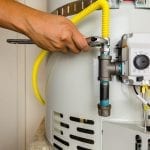Were you interested in related information around Tips For Maintaining Your Hot Water Heater?

Hot water is essential for day-to-day convenience, whether it's for a refreshing shower or cleaning meals. To guarantee your warm water system runs efficiently and lasts much longer, routine upkeep is essential. This write-up supplies practical pointers and insights on just how to preserve your home's warm water system to stay clear of interruptions and pricey repair services.
Intro
Preserving your home's warm water system may appear overwhelming, however with a couple of basic actions, you can ensure it runs smoothly for several years ahead. This guide covers every little thing from understanding your warm water system to DIY maintenance pointers and understanding when to hire specialist help.
Value of Keeping Your Hot Water System
Routine upkeep not only expands the lifespan of your warm water system yet also guarantees it runs efficiently. Disregarding maintenance can cause lowered efficiency, greater power bills, and even premature failure of the system.
Indicators Your Warm Water System Needs Maintenance
Recognizing when your warm water system needs focus can avoid major concerns. Keep an eye out for signs such as inconsistent water temperature, weird sounds from the heating system, or rusty water.
Comprehending Your Warm Water System
Prior to diving right into upkeep jobs, it's helpful to recognize the basic elements of your hot water system. Generally, this includes the hot water heater itself, pipelines, anode poles, and temperature level controls.
Monthly Maintenance Tasks
Routine regular monthly checks can help catch minor problems prior to they rise.
Purging the Hot Water Heater
Flushing your water heater eliminates debris accumulation, boosting performance and lengthening its life.
Checking and Replacing Anode Rods
Anode rods avoid rust inside the storage tank. Checking and changing them when broken is critical.
Examining and Adjusting Temperature Settings
Adjusting the temperature settings ensures ideal efficiency and security.
Do It Yourself Tips for Upkeep
You can do several upkeep jobs on your own to maintain your warm water system in top condition.
Checking for Leakages
Consistently evaluate pipelines and links for leaks, as these can result in water damage and greater expenses.
Evaluating Pressure Relief Valves
Testing the stress safety valve ensures it functions appropriately and stops extreme pressure buildup.
Shielding Pipelines
Protecting hot water pipelines minimizes warm loss and can save energy.
When to Call a Specialist
While DIY maintenance is valuable, some concerns need professional proficiency.
Facility Problems Requiring Specialist Assistance
Examples consist of major leaks, electric problems, or if your hot water heater is regularly underperforming.
Routine Specialist Maintenance Conveniences
Specialist maintenance can consist of extensive inspections, tune-ups, and making certain compliance with safety and security requirements.
Conclusion
Normal maintenance of your home's warm water system is vital for performance, durability, and price savings. By adhering to these ideas and recognizing when to look for expert aid, you can make certain a dependable supply of hot water without unexpected disturbances.
How to Maintain an Instant Hot Water Heater
Before tinkering with your hot water heater, make sure that it’s not powered on. You also have to turn off the main circuit breaker and shut off the main gas line to prevent accidents. Also turn off the water valves connected to your unit to prevent water from flowing into and out of the appliance. 2. When you’re done, you have to detach the purge valves’ caps. These look like the letter “T†and are situated on either side of the water valves. Doing so will release any pressure that has accumulated inside the valves while at the same time avoid hot water from shooting out and burning your skin. 3. When the purge valves’ caps are removed, you have to connect your hosing lines to the valves. Your unit should have come with three hoses but if it didn’t, you can purchase these things from any hardware or home repair shops. You can also get them from retail stores that sell water heating systems. Read the user’s manual and follow it to complete this task properly. When the hosing lines are connected, open the purge port’s valves. 4. You should never use harsh chemical cleaners or solutions when cleaning your unit. Make use of white vinegar instead. It should be undiluted and you’ll probably use about 2 gallons. 5. Now flush your water heater. This task should probably take about 40 minutes. We can’t give you specific directions for this because the procedure is carried out depending on the type, model and brand of your heater. With that being said, refer to the user’s manual. 6. When you’re done draining the unit, you have to turn off the purge port valves again. Remove the hosing lines that you earlier installed on each of the water valves. Put the valve caps (purge port) back in their respective places and be very careful so as not to damage the rubber discs that are found inside these caps. 7. Now that everything’s back in place, check your user’s manual again to find out how to reactivate your water heating system. 8. Once it is working, turn one of your hot water faucets on just to let air pass through the heater’s water supply pipes. Leave the tap on until water flows smoothly out of it. https://www.orrplumbing.com/blog/2014/september/how-to-maintain-an-instant-hot-water-heater/

Hopefully you enjoyed our piece about How to Maintain a Hot Water Heater in a Few Simple Steps. Many thanks for taking time to read our piece of content. Loved our posting? Please quickly share it. Let another person discover it. Thanks a lot for your time invested reading it.
Click Here